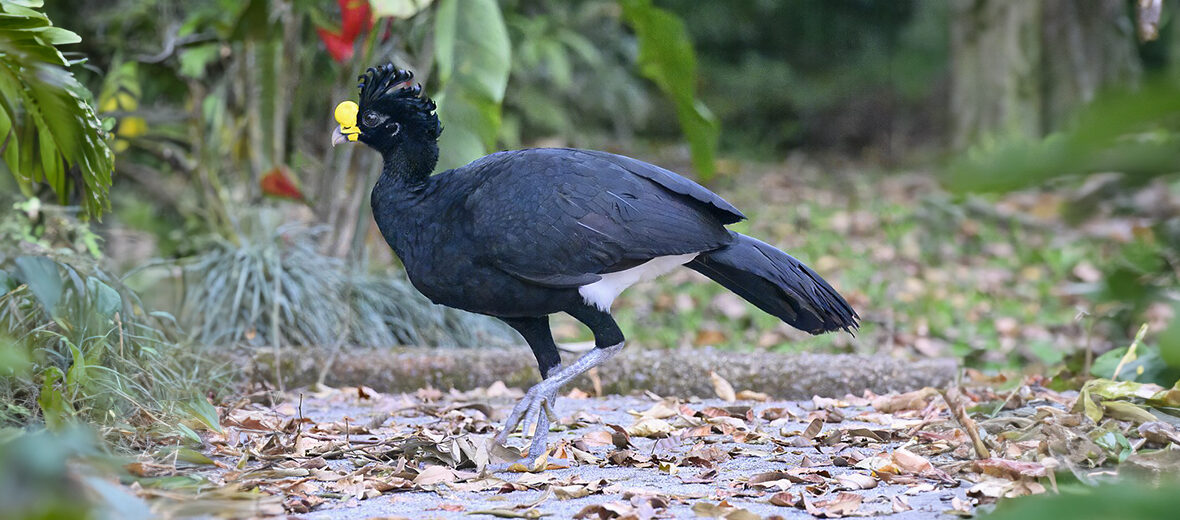
The great curassow hails from the Neotropical rainforests of Mexico, Central America, and northern South America. These pheasant-like birds are threatened by habitat loss and destruction at the hands of farming, ranching, fires, and fire suppression; roads and railroads, that can divide their territories and also result in vehicle strike (being hit by vehicles); hunting; trapping; invasive species, that can result in predation; and climate change, that can cause storms and flooding. The IUCN lists these birds as Vulnerable.
First the Stats…
Scientific name: Crax rubra
Weight: Up to 10.6 lbs.
Length: Up to 39 inches, plus a 15 inch tail
Wingspan: Up to 35.4 inches
Lifespan: Up to 24 years
Now on to the Facts!
1.) Their populations are decreasing and as of 2020 they numbered just 50,000 wild individuals.
2.) The call of these birds is a strange, lingering whistle. However, general group communication consists of grunts, like chickens produce.
3.) Being different from other cracids, like guans, they feed mostly on fallen fruit instead of plucking fruit right from the trees.
4.) They also feast on figs, various arthropods, insects, and the occasional mouse.
5.) These birds are renown for their aggressive behavior towards humans while in captivity.
But wait, there’s more on the great curassow!
6.) Great curassows are preyed on by ocelots and ornate hawk-eagles, to name just a couple. Chicks are preyed on by other various creatures.
7.) In order to provide protection for their chicks from predators they will feign injury (fake an injury) in order to distract the predator from the chicks.
Did you know…?
When attacking humans, these critters will leap in a fluttering flight and scratch at the head, primarily going after the eyes.
8.) The great curassow is part of a clade that inhabited the north of South America since about 9,000,000 years ago during the Tortonian, Late Miocene.
9.) When the Colombian Andes were uplifted around 6,000,000 years ago, this species’ ancestors were then cut off from the population to the southeast.
10.) Great curassows are monogamous (mate for life).
But wait, there’s still more on the great curassow!
11.) Females lay up to 2 eggs each season that hatch in up to 33 days.
12.) These birds can be found in pairs or small groups, called families.
Now a Short Great Curassow Video!
Be sure to share & comment below! Also, check out the Critter Science YouTube channel. Videos added regularly!
Want to suggest a critter for me to write about? Let me know here.
Some source material acquired from: Wikipedia & IUCN
Photo credit: lwolfartist




